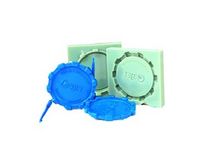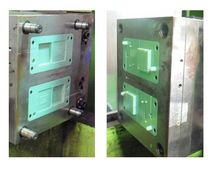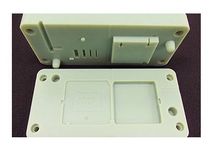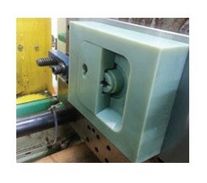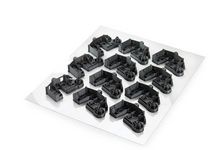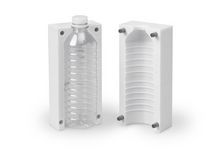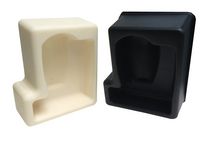- Commercial 3D printers & additive manufacturing solutions
- Order sample print
Injection Moulds with a 3D Printer
PolyJet 3D Printing has made it feasible to quickly create custom injection molds that produce low volumes of parts in the final production plastic.The Injection Moulds with a 3D Printer is great for:
- Prototypes
- Custom injection molds
Prototypes are most useful when they’re made of the same plastic as the final production part. Molds produced with Stratasys’ PolyJet technology can be an efficient alternative to tooling if the geometries, quantities and materials apply. PolyJet 3D Printing has made it feasible to quickly create custom injection molds that produce low volumes of parts in the final production plastic.
This is especially useful for prototypes, which can now be created onsite in just hours, from mold design to final test product, using the normal plastic injection molding process and production materials for accurate functional testing.
Designers and engineers can test their work more frequently and more accurately, and go to production with confidence. Product managers can shrink time to market and products can turn out better.
PolyJet Injection Molds
PolyJet technology creates smooth, detailed, accurate molds. Digital ABS 3D printing material is strong enough to hold up to short injection molding runs of about 10 to 100 parts. You can install the 3D printed mold directly onto your injection molding machine. If testing reveals that you need to make a design improvement, you can alter the mold in directly in CAD and 3D print the next iteration. Depending on size, the new mold can be printed and ready to inject in just a few hours.
PolyJet 3D printed molds are not production tools. But during the design and testing phase, they offer a clear advantage over conventional injection molding. Product designers and manufacturers can use these molds to perform thorough functional testing without worrying about cost-prohibitive tooling. Flaws based on the final production process, geometry or choice of plastic can be discovered early, when they are easiest to fix. This can reduce costly, time-consuming mold corrections, increase product innovation and speed product development.
What is your tool prototyping budget?
Hard-tooling molds made from steel have a long service life and therefore can be an expensive investment for prototyping. Soft-tooling, although cheaper and faster, can also be expensive when the risk for design changes is high. If it’s hard to justify the cost of traditional tools for a small quantity of test parts and your budget is less than £2,000, then PolyJet molds may be a good fit.
What stage are you at in product development?
PolyJet molds can’t replace soft- or hard-tooling, but can be a bridge between FDM 3D printed prototypes and injection molding. They fill the gap when you anticipate multiple mold iterations and have a condensed timeline. If you’ve already 3D printed 1 to 10 part iterations for simulations and prototyping, but aren’t ready to produce 100 to 20,000 manufactured parts using a soft-tool, then you may need 10 to 100 parts using a PolyJet mold.
What material are your end use parts?
PolyJet molds are compatible with many injection molding thermoplastics, allowing you to prototype with the same plastic as the final production part.
How complex is your design?
Complex geometries, thin walls and fine details can be challenging to achieve using steel or aluminum molds. With PolyJet, you have more design freedom to explore features, cores and cavities that would be impossible to form with traditional injection molding methods. Plus, you can build a PolyJet mold in 30 micron layers with accuracy as high as 0.1 mm, creating a smooth surface finish and virtually no need for post-processing.
What size is your part?
PolyJet molds are ideal for mid-sized parts less than 165 cm3. They can be used in 50 to 80 ton molding machines or manual hand presses.
What is your project timeline?
A PolyJet mold can be built within a few hours, compared to days or weeks to create an aluminum or steel mold. Design mistakes or tweaks are also easily and quickly fixed. When you need updates fast, it’s as simple as editing your 3D CAD model and sending the file to the nearest PolyJet service bureau for production.
The key benefit of using PolyJet molds is the ability to execute thorough testing to gather critical performance data without high tooling costs. Design and manufacturing flaws can be discovered early before you invest in an aluminum or steel mold, improving product development processes and saving you time and money in the long run.
 Worcester (Head Office) 01905 458 000
Worcester (Head Office) 01905 458 000 3d@stanfordmarsh.co.uk
3d@stanfordmarsh.co.uk









